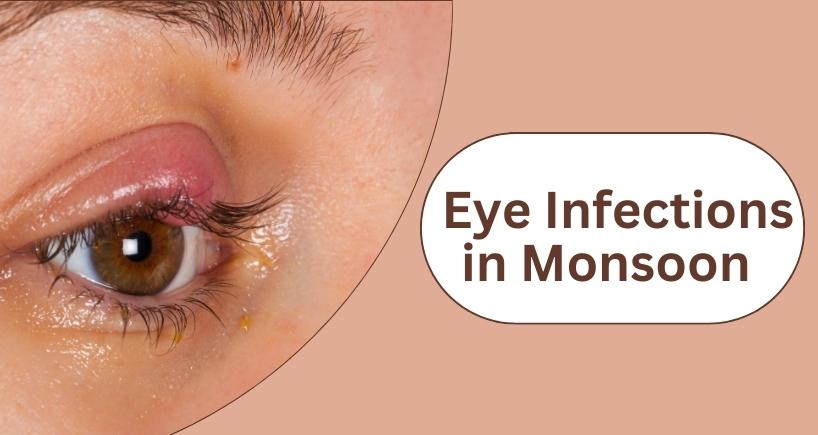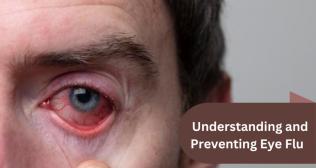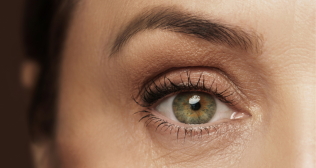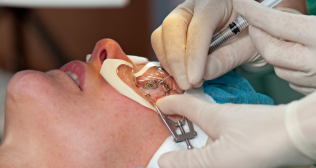
Common Monsoon Eye Infections and How to Prevent Them
The monsoon season brings much-needed relief from the summer heat, but it also creates the perfect environment for various infections to thrive, including those that affect the eyes. The increased humidity and stagnant water can lead to a rise in eye infections, which, if left untreated, can cause significant discomfort and even long-term damage. Understanding common monsoon Eye Infections and how to prevent them is crucial for maintaining optimal eye health during this season.
Common Monsoon Eye Infections
1. Conjunctivitis (Pink Eye)
Conjunctivitis, commonly known as pink eye, is an inflammation of the conjunctiva, the thin, transparent layer covering the white part of the eye. It is highly contagious and can spread quickly through direct contact. Symptoms include redness, itching, a gritty feeling in the eye, and discharge that may form a crust overnight.
2. Stye
A stye is a painful, red lump near the edge of the eyelid caused by a bacterial infection of the oil glands. It resembles a pimple or boil and can cause swelling, tenderness, and discomfort. Poor hygiene and exposure to dust and dirt during the monsoon can increase the risk of developing styes.
3. Keratitis
Keratitis is an inflammation of the cornea, often caused by bacterial, viral, or fungal infections. It can lead to redness, pain, excessive tearing, blurred vision, and light sensitivity. Contact lens wearers are particularly susceptible to keratitis, especially if they do not maintain proper lens hygiene.
4. Fungal Eye Infections
The warm and humid conditions of the monsoon season create an ideal environment for fungal infections. Fungal keratitis is a serious condition that can cause redness, pain, blurred vision, and discharge. It can develop from minor injuries or exposure to contaminated water.
5. Dry Eyes
Contrary to what one might expect, the monsoon season can also lead to dry eyes. Constant exposure to wind and rain can cause the tear film to evaporate more quickly, leading to dryness, irritation, and discomfort.
Prevention Tips
1. Maintain Proper Hygiene
Proper hygiene is essential to prevent eye infections. Wash your hands regularly with soap and water, especially before touching your eyes. Avoid rubbing your eyes, as this can transfer bacteria and viruses from your hands to your eyes.
2. Protect Your Eyes from Rainwater
Avoid direct exposure to rainwater, as it can contain pollutants and contaminants that can cause eye infections. If your eyes do get exposed to rainwater, rinse them with clean, sterile water as soon as possible.
3. Use Clean Towels and Handkerchiefs
Use clean, dry towels and handkerchiefs to wipe your face and eyes. Avoid sharing these items with others to prevent the spread of infections.
4. Wear Protective Eyewear
Wearing sunglasses or protective eyewear can shield your eyes from dust, debris, and rainwater. This can help reduce the risk of infections and irritations.
5. Avoid Using Contact Lenses
If possible, reduce the use of contact lenses during the monsoon season. If you must wear them, ensure they are cleaned and disinfected properly. Switch to glasses whenever you can to minimize the risk of infections.
6. Keep Your Environment Clean
Ensure that your living environment is clean and free from dust and allergens. Regularly clean areas prone to moisture and mold, as these can harbor harmful microorganisms that can cause eye infections.
7. Stay Hydrated
Drink plenty of water to keep your body and eyes hydrated. Proper hydration helps maintain a healthy tear film, which protects your eyes from infections and irritations.
8. Consult an Eye Specialist
If you experience any symptoms of eye infections, seek medical advice promptly. Early detection and treatment can prevent complications and ensure a swift recovery.
Categories
Clear allMeet the doctor

- Ophthalmology | Ophthalmology
-
25 Years
-
1600



















